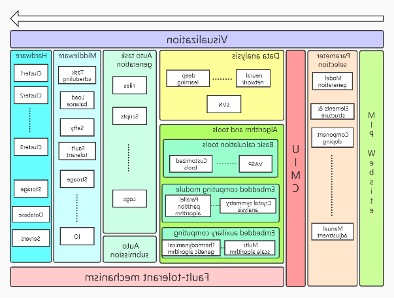Independent Platform Software Development and Application
of High Throughput and High Concurrent Material Computing
Wu Zhang1*, Wenhao Zhu1, Jianyue Ni1,
Lingti Kong2, Hong Zhu2, Qingyan Xu3, Chongyu
Wang3
1 Shanghai University, Shanghai, 200444, China
2 Shanghai Jiao Tong University, Shanghai, 200240, China
3Tsinghua University, Beijing, 100084, China
ABSTRACT: High throughput and high
concurrent material computing is one of the most important parts of materials
genome engineering. Its essence is to explore how to apply "high
throughput screening", "chemical component doping" and
"data association analysis" to material computer simulation to guide
new materials design. Material computing platforms have been established
throughout the years, including MP, AFlow, NoMad, MatCloud etc. However, these
platforms mainly focus on isolated computing resources rather than integrating with
the discrete computing resources. Our research team has developed a
high-throughput concurrent computing framework and software system called MIP
with independent intellectual property rights and integrated with multiscale
computing algorithms. MIP has been deployed in multiple super computers
including the National High Performance Computing Center (Wuxi) realizes the
concurrent calculation of 102 nickel base superalloy tasks with the
processing and analysis of the results.

Figure 1. Architecture of MIP
Keywords: Materials genome engineering;
high throughput and high concurrent computing; domestic supercomputer; material
computing information platform.

Dr. Wu ZHANG, professor of School of Computing, Shanghai University, Materials Genome Institute and Shanghai Institute of Applied Mathematics and Mechanics. He has devoted himself to the research of high-performance computing and applications, and has published more than 200 papers. He established the high performance computing center of Shanghai University and served as the first director of the center in 2007. SuperLBM, an application software of CFD based on Lattice Boltzmann Method, has been jointly developed with Commercial Aircraft Company of China, and used in the design of domestic commercial aircraft since 2009. Dr. Zhang is currently a member of Numerical Software Working Group (WG2.5), the IFIP.